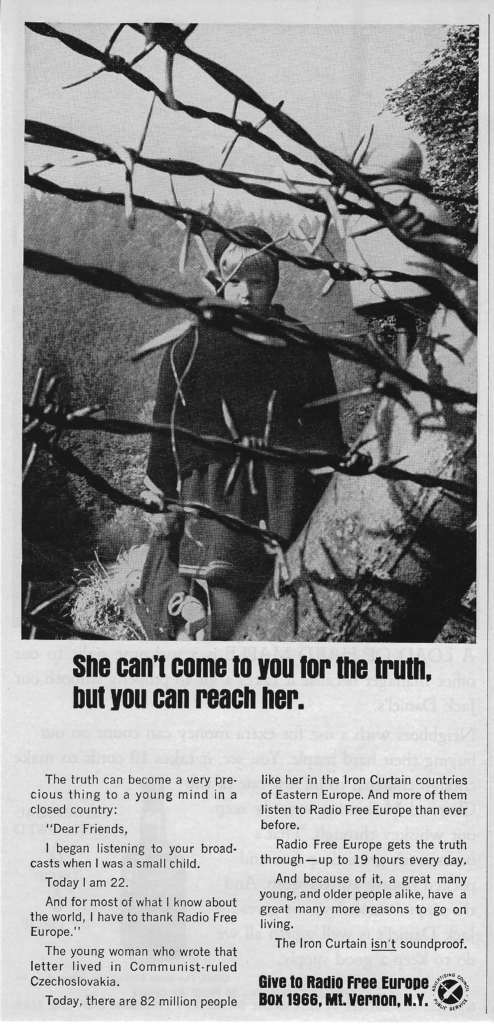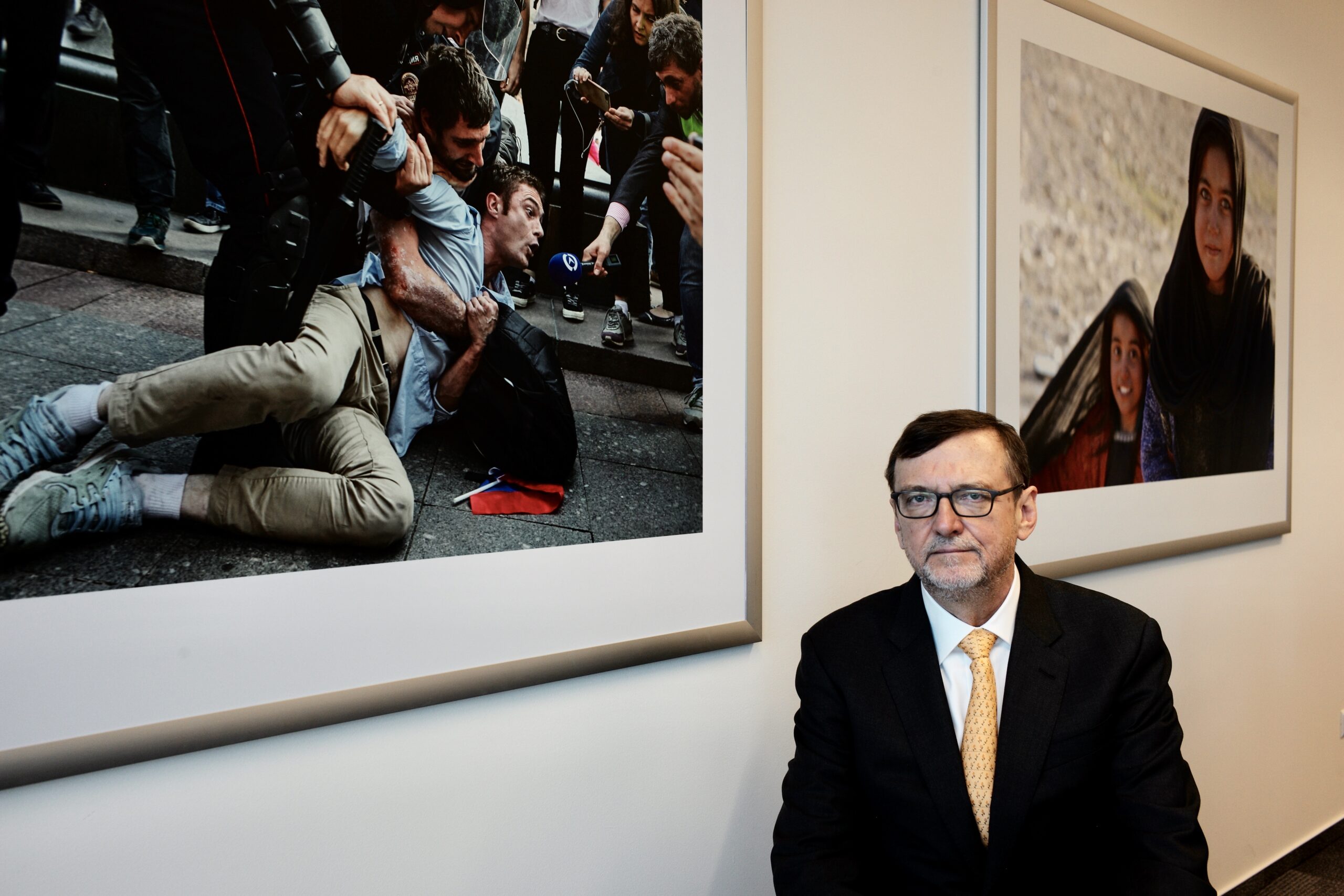The Crusade for Freedom was the name of an advertising campaign designed to get Americans to contribute money to Radio Free Europe which broadcast radio programs in various languages to the captive nations behind the Iron Curtain during the Cold War. The ad seen here is from 1966 and appeared in an American magazine. This particular ad seems to have been originated directly by Radio Free Europe or a support organization and was not part of the earlier Crusade for Freedom campaign which started in 1950 and ended in 1960.

She can’t come to you for the truth , but you can reach her.
The truth can become a very precious thing to a young mind in a closed country:
“Dear Friends,
I began listening to your broadcasts when I was a small child.
Today I am 22.
And for most of what I know about the world, I have to thank Radio Free Europe.”
The young woman who wrote that letter lived in Communist-ruled Czechoslovakia.
Today, there are 82 million people like her in the Iron Curtain countries of Eastern Europe. And more of them listen to Radio Free Europe than ever before.
Radio Free Europe gets the truth through—up to 19 hours every day.
And because of it, a great many young, and older people alike, have a great many more reasons to go on living.
The Iron Curtain isn’t soundproof.
Give to Radio Free Europe
BOX 1966, Mt.Vernon,N.Y.
Soviet and Western critics of Radio Free Europe and Radio Liberty, its sister station broadcasting to the Soviet Union, argued that such advertising campaigns obscured the fact that the bulk of RFE’s budget came from the CIA which continued its support and management oversight until 1972. Ultimately, however, the money came from U.S. taxpayers through the U.S.Congress at the request of both Democratic and Republican administrations. Since 1972, the station’s budget was no longer kept secret and appeared in congressional appropriations.
The initial secrecy about the source of funding was a mistake on the part of the stations’ early organizers. Audiences in Eastern Europe did not care much where the money for Radio Free Europe came from, although the CIA connection would have been an embarrasment if it were officially revealed. The people in Bulgaria, Czechoslovakia, Hungary, Poland and other countries in the Soviet Block were encouraged by the U.S. government organizing in the early 1950s and supporting what was a surrogate radio in addition to the Voice of America (VOA), the official American station which broadcast since 1942 but did not provide much local and regional East European news or sharp political commentary. During World War II, VOA, which was then dominated by a pro-Soviet management and broadcasters from the far-left, actually supported communist movements and Stalin’s designs on Eastern Europe which they saw as both progressive and peaceful. For several years after the war, VOA’s management, then within the State Department, still prevented a group of anti-communist journalists newly hired after the war from being too vocal in criticizing Russia and exposing Stalin’s crimes. This led to calls for establishing RFE which became the main lifeline to freedom for millions of loyal radio listeners.
The far left in the West, however, used the initial secrecy for what was largely their unfair and misguided criticism of the stations echoing similar criticism from the Soviet Union. Western critics ignored RFE’s and RL’s tremendous contribution to opposing tyranny and giving hope to the people living on a daily basis with censorship and oppression.
Not to be ignored was also the fact that the East Europeans found themselves under Soviet and communist domination partly as a result of the indifference if not outright support for Stalin from the American administration of Franklin Delano Roosevelt and many leftist intellectuals in the United States and Western Europe. Many of those who initially supported and defended Stalin later criticized Radio Free Europe and Radio Liberty.
The majority of Americans, however, remained opposed to communism and the expansion of Soviet influence and looked sympathetically on the freedom broadcasts funded by their government.
Private funding for sustaining political broadcasts in multiple languages over several decades was never feasible, but thanks to ads and commercials such as the one with a picture of the girl behind the barbed wire fence of the Iron Curtain, many Americans contributed individually small amounts of money to keep the fight for freedom alive with uncensored news and commentary. They, rather than the critics of Radio Free Europe, were on the right side of history when communism finally collapsed in most of the Soviet Block toward the end of the 1980s and the beginning of the 1990s.
One of the support organizations for RFE during the 1960s was the Radio Free Europe Fund whose membership included executives of major U.S. corporations and other prominent Americans. In February 1962, the group met at the White House with President John F. Kennedy who expressed his support for Radio Free Europe’s mission.



